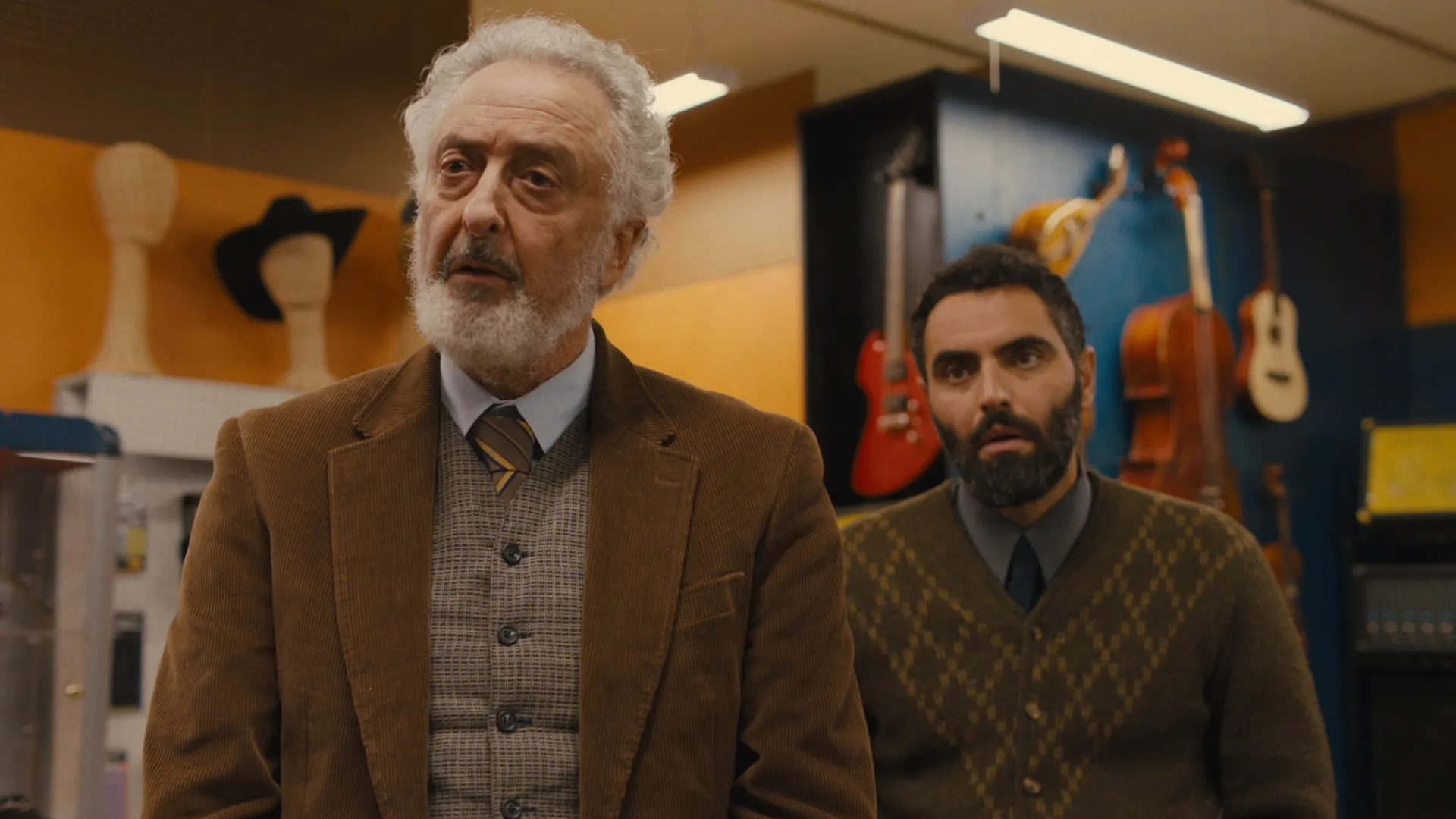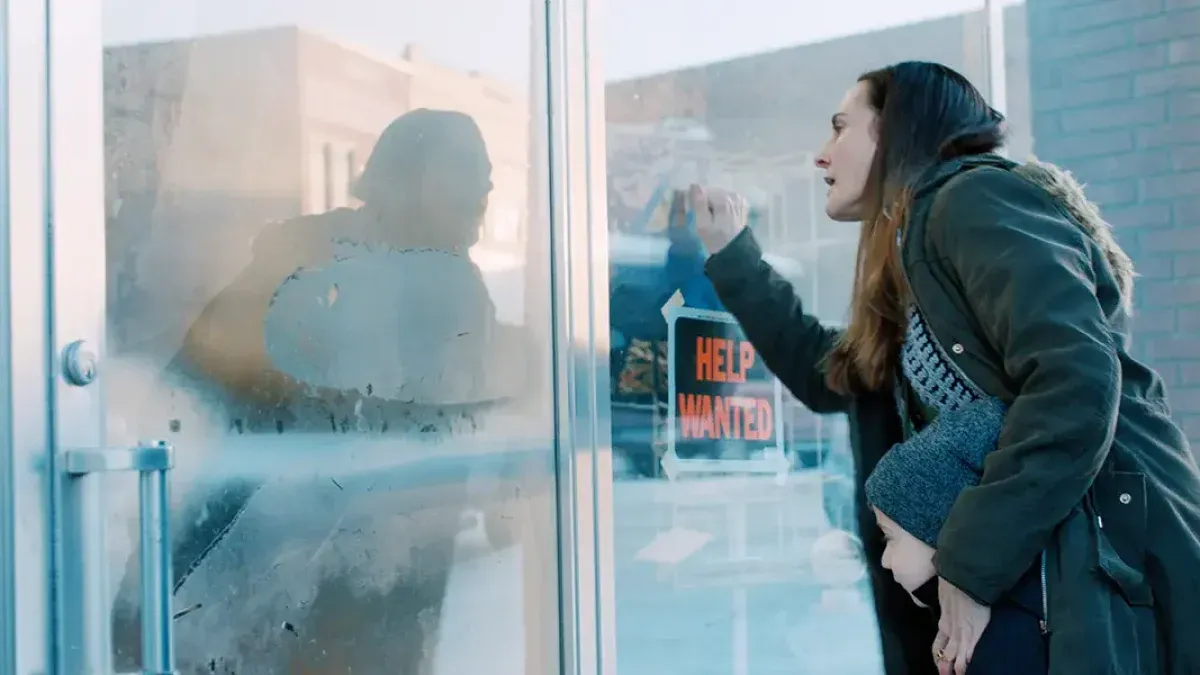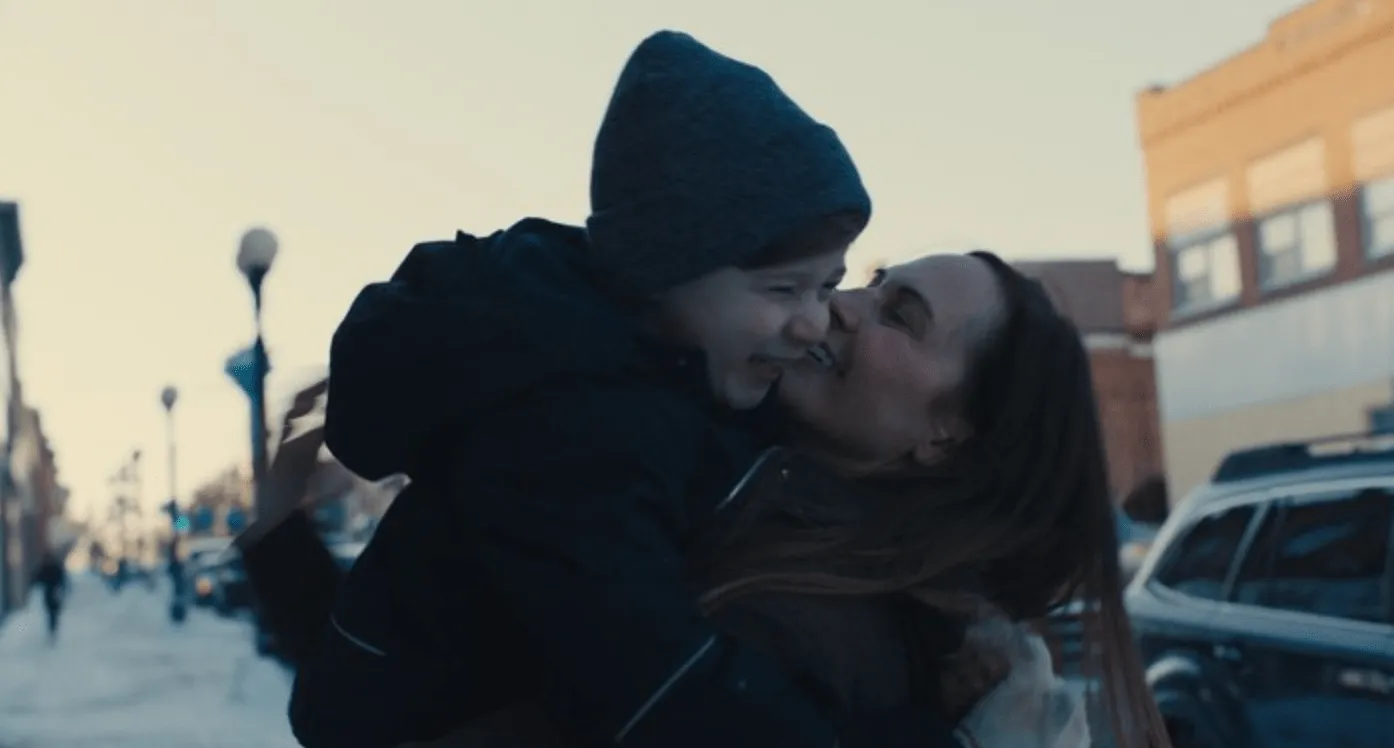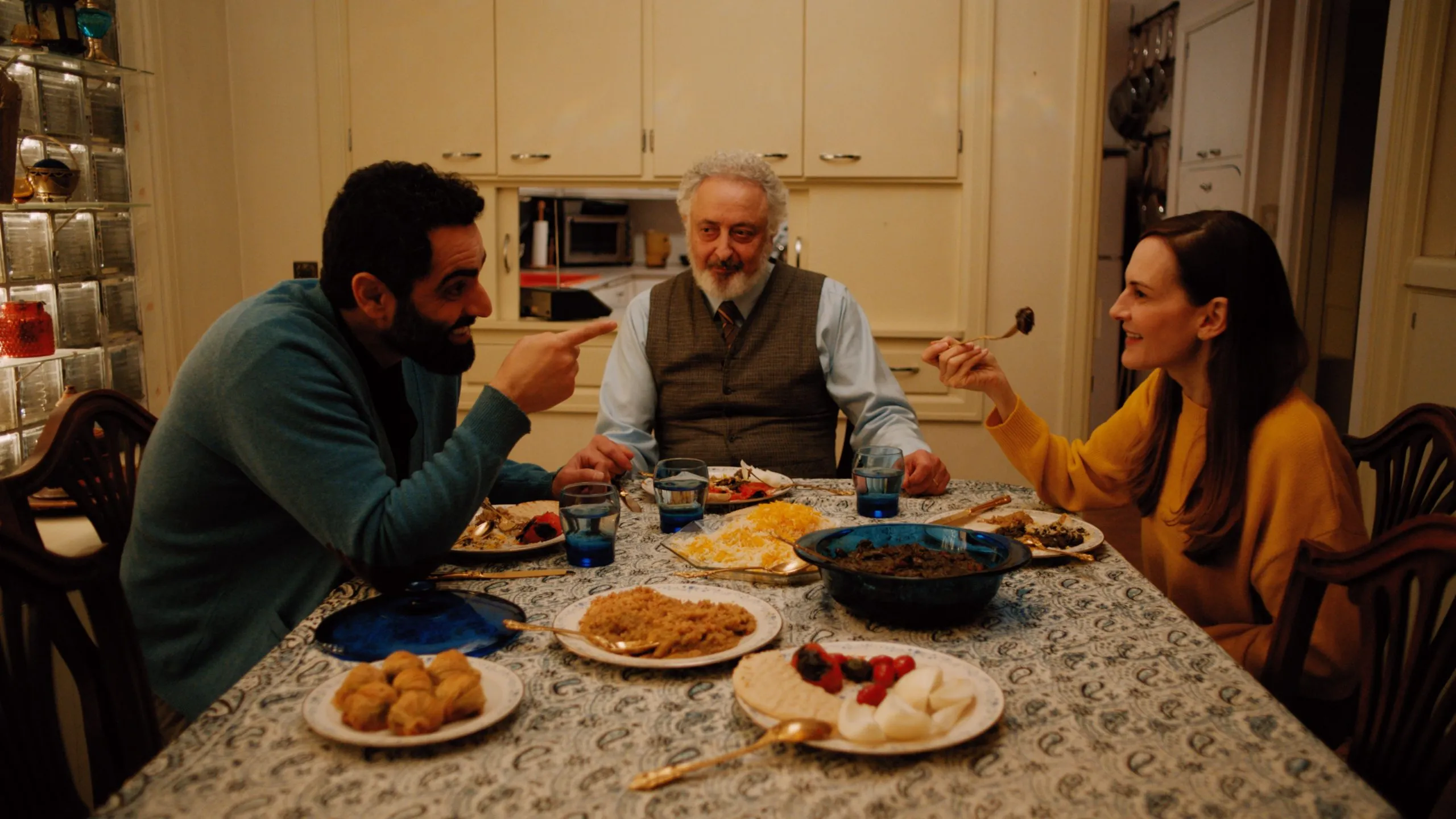Cash for Gold is a festive drama set against a wintry Minnesota landscape. The film opens in a small town where the chill of the season mirrors the struggles of everyday life. At the heart of the story is Grace, a widowed single mother whose recent loss and mounting financial issues set her on a path filled with personal challenges. Her efforts to maintain stability come into focus when she steps into the local pawn shop—a modest establishment managed by a family of Iranian immigrants.
Within this shop, differing lives intersect in unexpected ways. Grace’s encounter with Hasan and Mohammad creates a setting where personal hardships and fresh opportunities mingle. The shop becomes more than a place of transactions; it serves as a shelter where trust begins to build slowly over shared experiences. Grace’s journey through a maze of personal demons and economic hardships is shown with both empathy and sincerity.
The snowy backdrop and the festive season heighten the emotional ambiance, offering a quiet counterpoint to the more intense personal dilemmas at play. This opening sets the stage for a film that uses its holiday setting to capture moments that are both stark and tender, inviting viewers to consider the interplay between hardship and hope.
Plot Progression and Narrative Dynamics
The film begins by placing us in the midst of Grace’s difficult life amid the snowy streets of Minnesota. Her struggle to maintain a stable home becomes evident as she fights to support herself and care for her son. In the opening moments, we witness the setup that drives her to a modest pawn shop, a space that represents more than a mere business—it is where disparate lives converge.
The narrative introduces key challenges early on. Grace faces mounting financial pressures and the pain of personal loss while the threat of losing her most prized possessions looms large. The film makes use of small but pointed sacrifices—a cherished memory traded off for a bit of much-needed cash—to highlight the stakes at hand.
As the story moves forward, a decision to seek employment at the pawn shop creates a ripple effect, injecting both practical and emotional tension into the plot. The storyline is punctuated by moments where cultural differences clash with personal struggles. For instance, a conversation in the shop shines a light on the contrast between the local way of life and the unique experiences of its immigrant owners. These moments add layers to the narrative, exposing vulnerabilities in each character while also building a shared sense of urgency.
Certain scenes serve as turning points that force the characters to face their histories. Intense discussions among the staff lead to brief but impactful revelations, setting the stage for the subsequent interactions that bring a measure of hope.
The brisk narrative style condenses what could have been drawn-out moments into powerful interactions, capturing fleeting yet significant emotional shifts. The intertwining of subplots—ranging from economic hardship to struggles with addiction and cultural clashes—keeps the viewer engaged and invested in the characters’ evolving bonds, leaving an open thought on how these elements might shape future endeavors.
Character Focus: Struggle and Renewal
Grace stands at the center of the film with a background marked by loss and hardship. As an Army widow, she faces stark financial challenges while contending with the shadow of past addictions. Her experience as a single parent shapes a constant internal tug-of-war between personal limitations and the fierce need to provide stability for her son.
Early scenes reveal her vulnerability through everyday struggles, such as balancing a meager income with mounting bills, while her quiet determination hints at a slow, steady change from despair to self-reliance. Small moments—like when she hesitates before making choices that might compromise cherished memories—offer clear insights into her inner conflicts and gradual steps toward empowerment.
Supporting characters also bring their own layers of complexity to the narrative. Hasan, a member of an immigrant family, battles personal losses and a sense of isolation in a community that feels distant from his cultural roots. His gentle nature and initial reluctance to fully open up speak to the difficulty of reconciling the weight of his past with the new expectations he faces.
In contrasting his approach, Mohammad appears as a stabilizing presence. His past, marked by a more refined career, contrasts with his current role managing the humble pawn shop. His calm and measured demeanor provides a quiet counterbalance to the struggles surrounding him.
Secondary figures, including Grace’s family members and local neighbors, offer additional layers by reflecting different aspects of community life. Interactions between Grace and Hasan, in particular, show a unique bond formed through shared understanding rather than romantic development.
Several key scenes capture moments of silent acknowledgment and unspoken support—a subtle laughter shared or a look that speaks volumes—demonstrating the authenticity each actor brings to their role. These moments highlight how the film uses intimate exchanges to stitch together its narrative, prompting viewers to consider what shapes a person beyond visible scars and simple labels.
Crafting the Vision: Direction and Cinematic Storytelling
The screenplay presents dialogue that feels honest and grounded, capturing everyday human struggles without falling into predictable patterns. The words spoken by the characters mirror real-life tensions around issues such as dependency, loss, and cultural differences. Short, impactful exchanges spark bursts of tension that reveal underlying emotions and subtle humor, giving the narrative a pulse that moves briskly without overwhelming its viewer.
Puette’s involvement in both the acting and directing responsibilities is evident in the film’s crafted moments. Her visible vulnerability pairs with a clear determination to shape the story, adding a level of warmth and intimacy to each scene. In the pawn shop sequences, for example, her careful handling of dialogue and action shines through, making personal conflicts feel both genuine and layered. The film’s pacing is arranged in a manner that introduces conflicts with speed yet allows soft moments of pause; these rests enable viewers to register the quieter, more personal elements that support the unfolding drama.
The cinematography captures a stark winter setting that mirrors the emotional isolation of its characters. The interplay between subdued indoor lighting and the natural brightness of the snowy exterior creates a striking visual contrast.
Specific imagery—a reflective window, or a seemingly insignificant piece of jewelry—turns into markers of lost time and fractured memories. The sound design contributes to the visual storytelling by introducing a score that quietly reinforces the mood, binding together the emotional undercurrents with the physical setting.
These artistic layers prompt reflection on the lasting imprint of personal storytelling, as the film seamlessly ties together dialogue, direction, and visual composition to leave viewers with impressions that persist beyond the final scene.
Cultural Resonance and Thematic Depth
The film presents a narrative that centers on personal redemption through sheer persistence and unexpected support. Grace’s experience of making hard decisions under severe hardship illustrates how moments of kindness spark a shift from despair to determination.
Her struggle is shown in scenes where every sacrifice, including letting go of cherished memories, serves as a stepping stone toward a steadier future. The film captures the delicate balance between personal duty and the weight of familial responsibilities. The tender bond between Grace and her son is depicted with an authenticity that pulls at the heartstrings, highlighting the sacrifices made in the name of love and survival.
Financial strain and the harshness of economic decline weave through the storyline as potent reminders of the everyday challenges faced by many. The depiction of a community grappling with limited resources shines a light on persistent issues surrounding poverty and a scarcity of opportunities.
At the same time, the narrative interlaces the story of Iranian immigrant figures who bring to the screen their own histories and struggles. Their portrayal contrasts with conventional views, inviting viewers to appreciate a different perspective on cultural legacy and coexistence. Interactions within the pawn shop serve as small vignettes that expose encounters with social prejudice alongside shared human tenderness.
Religious and moral nuances surface in carefully crafted scenes that question established expectations about ethics and belonging. The film employs gold as a significant symbol—a tangible link to a past filled with both loss and lasting memories, standing for more than mere monetary gain.
The winter setting acts as a mirror to the characters’ inner lives, its frozen landscapes hinting at isolation yet suggesting that even the harshest conditions may gradually soften. Throughout these moments, reflective surfaces and shifts in light offer visual hints that add unexpected layers to the narrative, inviting viewers to muse on the intersections between personal history, cultural identity, and the courage required to embrace change.
Production Elements and Lasting Impressions
The film’s technical craftsmanship creates a rhythmic flow that unifies its narrative. The editing intersperses brisk, focused sequences with quieter intervals, allowing viewers to fully experience both the peaks of tension and the necessary pauses for reflection. Such careful editing supports a narrative that carries dramatic moments with clarity, ensuring that key events resonate strongly without feeling rushed.
Equally significant is the production design paired with a thoughtful soundscape. The visual setup transforms the harsh winter setting into a mirror of the characters’ inner lives. Subtle shifts in light across intimate spaces reflect the shifts in a character’s state of mind, while meticulous set details provide a tangible sense of the environment’s emotional weight. The musical score complements these visuals, reinforcing poignant moments with instrumental cues that gently guide the viewer’s emotions rather than overpower the scene.
By portraying the everyday challenges of financial strain, familial duty, and cultural diversity through sincere performances and measured direction, the film invites reflection on how personal trials are met with quiet, transformative gestures. One cannot help but wonder how nuanced modifications in editing or set design might further illuminate the interplay between human vulnerability and the search for hope.
Full Credits
Director: Robert Enriquez, Deborah Puette
Writers: Deborah Puette
Producers: Cheri Anderson, Hassan Elmasry, Robert Enriquez
Cast: Deborah Puette, Farshad Farahat, JoBeth Williams, Jeff Kober
The Review
Cash For Gold
Cash For Gold delivers a heartfelt and reflective tale with sincere performances and careful technical artistry. The film captures the reality of everyday struggles and cultural encounters, highlighting the strength found in resilience and connection. Its precise pacing and thoughtful visual and sound design create an experience that lingers in memory.
PROS
- Sincere and heartfelt performances
- Thoughtful production design
- Effective integration of visual and sound elements
- Authentic portrayal of cultural challenges
- Emotional resonance in key scenes
CONS
- Some uneven pacing in narrative progression
- Occasional reliance on familiar story tropes
- A few underdeveloped subplots




















































